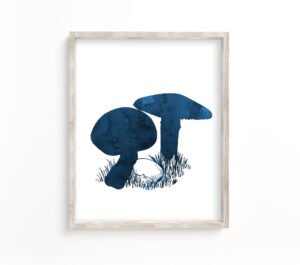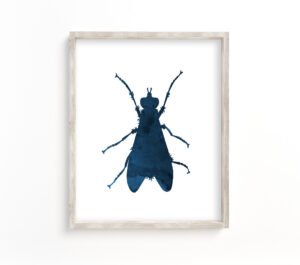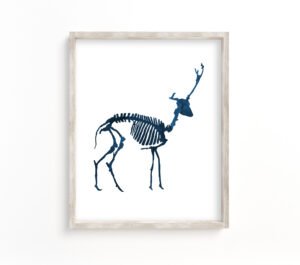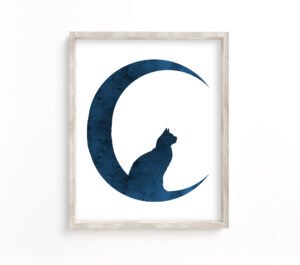What is minimalism in art?
What is minimalism in art?
Minimalism is one of the most significant and influential movements in modern art. Minimalism came to prominence in the 1960s and ’70s, peaked in popularity during the 1980s, and remains a dominant force in today’s art scene. It is characterized by “visual simplicity” through the performance-based pieces, consisting of a single material or object; essentially, anything can be considered minimalism as long as it has been distilled down to its purest form.
Minimalist artists were interested in getting rid of decorations such as frames and canvas supports; they wanted viewers to focus on what was being displayed rather than how it was presented. Many critics have shown their distaste for Minimalist artwork, as it is hard to understand, and one must focus to get a full appreciation for them. Minimalism has no clear parameters; it can be anywhere from sculptures to graphics and even furniture.
Minimalist artists use bold clean lines with colors primarily of blacks, whites, and grays to construct an object or space that appears simple yet complex at the same time. These objects are usually large in scale, allowing viewers to experience them directly rather than simply observing them from afar.
Minimalism emerged during a time when many changes were going on politically and socially within American society. During this period, it was pretty common for artists to think about issues that pertained to the world around them through art. Minimalist art often had social implications, including the economy, war, and human interaction; it often referred to the human condition. The message behind this artwork is not what is being said but how it is being presented.
Minimalism has become a way of life and is often used in many different aspects of everyday life, from technology to interior design. This movement was not a style or type of art; it was symbolic of the period that we were living in and continues to influence artists today.
Minimalism in art is becoming more popular and can be seen worldwide as paintings, sculptures, graphic arts, design, and many other forms of art. Although minimalism has been influencing people since its conception over fifty years ago, it continues to evolve into new generations of artists with a fresh perspective on how they want to display their artwork.
Minimalist art does not have a specific style but rather presents something in its simplest form without any physical or emotional excesses.
Minimalism has become a movement within art and is taking on different forms today; it influences artists in new and exciting ways.
Minimalist artwork often tries to diminish any decoration that would distract from its plainness. Minimalist art uses only basic shapes such as squares, rectangles, circles, etc. Patterns are also frequently present in minimalist works because they are often used to convey information or a specific message.
Minimalist artwork is usually composed of three or fewer colors. The vividness of brighter colors often attracts the eye, so they are often avoided to achieve the clean and pure look that minimalist works showcase.
Minimalism is known for its preference for hard edges rather than curves or irregular shapes. Sharp edges make a piece more recognizable thus easier to understand and comprehend without any unnecessary elements competing for one’s attention.
The main purpose behind minimalism in art was not just about simplifying artwork, but also about unconventionally displaying them by showing it alone without any other objects surrounding it; this was meant to force viewers to focus more on what is being displayed instead of how it was presented. This is similar to the meaning of minimalism in music, which focuses on simplicity rather than complexity.
Minimalism was not a style but rather an ideology that embraces less being more and gives viewers something unique and special with each work while also making it easier to understand and appreciate them. Although many people have their own interpretations of what minimalist art means, it can mean anything to anyone because no specific parameters define this concept. Some artists use bright, vivid colors, while others prefer bold monochromatic statements. Minimalist artwork often conveys messages beyond its visual appearance; they are meant to be provocative enough so that the viewer thinks long after they view the piece itself.
Minimalist art is a movement that has influenced artists from all over the world, whether it’s an artist in Paris or one in China; minimalism has become widely popular.
Minimalist artwork made its way into more than just the arts; musicians embrace this form of art’s pure and straightforward look because they have found that their music can be interpreted with minimal instruments. Artists and designers use minimalist forms to convey messages about society, while architects find inspiration within these forms as well. Fashion designers have embraced minimalism by taking bold elements such as color blocking and pairing them with simplistic shapes. Minimalism is everywhere because it brings simplicity to everyday life through various mediums.
If you love minimalist art featuring animals, visit our shop! We feature hundreds of minimalist animal prints – perfect for decorating your home fast, easy, and affordable!
-
 $20.00 – $29.00 inc. VatSelect options This product has multiple variants. The options may be chosen on the product page
$20.00 – $29.00 inc. VatSelect options This product has multiple variants. The options may be chosen on the product page -
 $20.00 – $29.00 inc. VatSelect options This product has multiple variants. The options may be chosen on the product page
$20.00 – $29.00 inc. VatSelect options This product has multiple variants. The options may be chosen on the product page -
 $20.00 – $29.00 inc. VatSelect options This product has multiple variants. The options may be chosen on the product page
$20.00 – $29.00 inc. VatSelect options This product has multiple variants. The options may be chosen on the product page -
 $20.00 – $29.00 inc. VatSelect options This product has multiple variants. The options may be chosen on the product page
$20.00 – $29.00 inc. VatSelect options This product has multiple variants. The options may be chosen on the product page -
 $20.00 – $29.00 inc. VatSelect options This product has multiple variants. The options may be chosen on the product page
$20.00 – $29.00 inc. VatSelect options This product has multiple variants. The options may be chosen on the product page -
 $20.00 – $29.00 inc. VatSelect options This product has multiple variants. The options may be chosen on the product page
$20.00 – $29.00 inc. VatSelect options This product has multiple variants. The options may be chosen on the product page -
 $20.00 – $29.00 inc. VatSelect options This product has multiple variants. The options may be chosen on the product page
$20.00 – $29.00 inc. VatSelect options This product has multiple variants. The options may be chosen on the product page -
 $20.00 – $29.00 inc. VatSelect options This product has multiple variants. The options may be chosen on the product page
$20.00 – $29.00 inc. VatSelect options This product has multiple variants. The options may be chosen on the product page